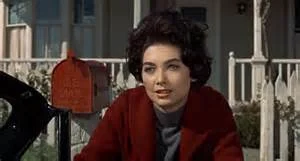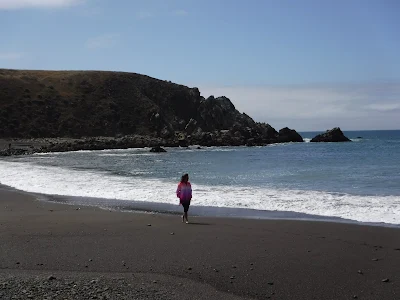 |
| 'Papa' Hemingway's framed photograph in his Key West home. |
The quotation above embodies the life of this writer - all lives end in death, but sometimes the way a person dies, does make them different from others. Hemingway proved that by choosing the manner of death, committing suicide on July 2nd, 1961 in Ketchum, Idaho.
Traveling the Florida Keys, allowed John and Laureen, to truly slow down and discover many things they had no idea existed. It's a laid back sort of lifestyle - the Keys. Beaches everywhere, bars and restaurants located alongside Highway 1, and the residents very friendly.
So, how does this driving end up with a blog on Ernest Hemingway? Well, it isn't really about him, but the influence he had in Key West, during the nine years he lived there full-time. Attention-getting was not something Hemingway had to work at, but attention was certainly something he got. As one of the world's best known writers, both short stories and novels, wherever he went, news soon followed.
As we drove through the city/key of Islamorada, we noticed a beautifully appointed Bass Pro Shop, located on the Overseas Highway (a fancy title for the 113 mile road, also known as Highway 1). Being fans of the chain (strange since neither of us have any interest in fishing), we stopped and ventured inside to have a look-see.
There, in the center of this huge outdoor sports supply mecca, stood a thirty-eight foot trawler with the name Pilar boldly emblazoned on it's hull. John instantly got goosebumps. It couldn't be...could it?
 |
| Looks like the Pilar! |
 |
| John at the keys of Hemingway's typewriter? In the Keys. |
 |
| Well, Laureen wasn't in that much of a hurry - relax a bit on the veranda and then hit the road. Island Time. |
Hemingway thought so too when he moved with his wife, Pauline, and their newborn son, Patrick. It was here in Key West that the author found his true success in writing, knocking out nearly 70% of all his combined works. A Farewell to Arms, Death in the Afternoon, and Green Hills of Africa to name just a few of the great works he tapped out during his Key West Days. In fact, Hemingway was probably, according to research, one of the first American novelists to have his work appear on the silver screen. At least eleven of his novels and short stories were turned into block bluster films.
His own life was an ongoing film. Married four times, wounded in World War I as an ambulance driver, he had traveled the world and even lived in Paris with the likes of James Joyce, Pablo Picasso, Gertrude Stein, and the Fitzgeralds. He embarked on lengthy deep sea fishing and explorations of the Caribbean aboard the Pilar, went on Safari into Africa, wrote about bull runs in Spain. He was a reporter during the Spanish Civil War, and during World War II, earned the Bronze Star for his journalistic work. Rumors and myths are still alive today, that Hemingway informally led a small platoon of soldiers at the retaking of Paris from the Nazis. He wasn't supposed to do that, being simply a journalist, but that couldn't stop Papa Hemingway. Adventure was in his blood - a few German soldiers were not likely to scare this man.
He won the Pulitzer Prize in 1952 and the Noble Prize in 1954. He did it all.
The house which the Hemingway family called home, is located at 907 Whitehead Street, a quaint and beautifully quiet section of Key West, just blocks from the sea which the writer loved so much. The white and black, two story abode rests comfortably on nearly an acre of land - the largest privately owned residential property on the island.
 |
| John, standing at the entrance to the Hemingway house |
 |
| How Hemingway looked while living in Key West |
 |
| Office where Hemingway wrote |
 |
| Cats own the house and the master bed |
It seemed, Pauline had learned that her husband had taken up with her friend, Martha Gellhorn during the Spanish Civil War, where Martha was also working as a journalist. So, as payback, Pauline had Ernest's boxing ring torn down and a pool put in.
 |
| The largest pool in the Florida Keys - of course |
 |
| The urinal pool - laying sideways |
His first spouse, Hadley introduced Pauline to Ernest - soon there was an affair and a divorce. Pauline, his second spouse, introduced Martha to Ernest, soon there was an affair and a divorce. Martha, his third spouse, introduced Mary to Ernest, soon there was an affair but this time no divorce. Mary made sure not to introduce any of her female friends to Ernest - safer that way.
"I don't mind Ernest falling in love," Pauline once wrote, "but why does he always have to marry the girl when he does?"
So, the search for Ernest Hemingway in Key West was complete. We learned a lot more about the author than what was available simply in material research. We walked where he walked. We had a drink or two at his favorite watering hole, and learned why he had moved to Key West in the first place.
Key West is an Ernest Hemingway mecca for millions of his fans. His influence can be seen and felt throughout the city. There's even an annual Hemingway Days each July - many white-bearded gentlemen (not Santa) arrive, trying to look like the writer himself.
He moved from Key West to Cuba in 1939, when he married Martha. He'd spent only nine years in the keys, but left an indelible mark nearly a hundred years later.
Though Ernest Hemingway was larger than life, in many ways, he was still simply a man. At the end, he was suffering from severe depression, the inability to write, and overall tiredness from an excess of adventures. Severely wounded during World War I, continual pain from two plane crashes, liver issues (hmmm, wonder why), weight issues, and other maladies collected, over a lifetime of abuse - both mentally and physically.
He lived life on his own terms, and on that summer morning in Ketchum, Idaho - he decided to go out on his own terms, as well.
As a tour guide stated at the Hemingway house - "We can't judge him for committing suicide. It was his choice, as was his entire life. He decided how and when the whole adventure would be over."
We may not agree - but then again, it's okay to agree to disagree.
For further information:
https://en.wikipedia.org/wiki/Ernest_Hemingway
https://www.hemingwayhome.com/
https://fla-keys.com/hemingway-days/




















